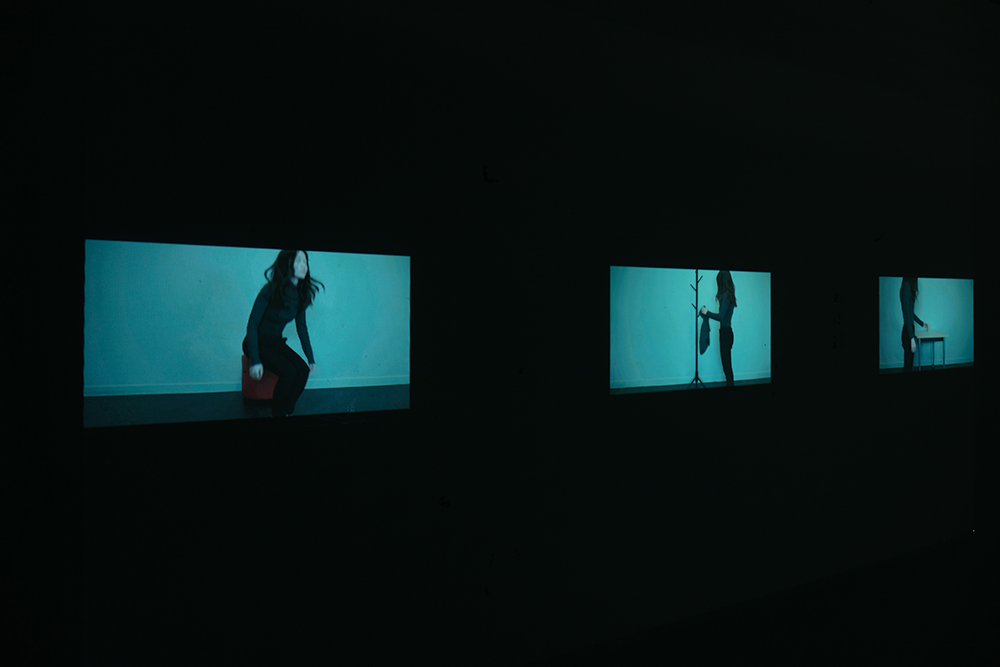I still cannot let go of the desire of a unity, a non-separation, a merging with others. There is the desire of getting somewhere and the futility of meaningless attempts or erasing separation, otherness, boundary, space, or gap. The inability to accept the absence makes me think of trying to sit on a chair that does not exist, put things on a table that does not exist, and hang things on a hook that does not exist. Their absence shows a loss of support and the repetition of the attempts only to fall suggests I am unable to accept the separation.[1] The visual of falling is inspired by Mona Hatoum’s Under Siege.[2] The effect of absence is influenced by Jennifer Doyle’s writing about Franko B’s I Miss You!:
In walking down the aisle alone, Franko B performs a union with an absence, for an audience. In this sense, the performance locates itself in the agonistics of the melodramatic conclusion as one attempts to absorb loss, the gap between what one wants and what one has.[3]
Other is a mediation to feel my existence while I am unable to differentiate them, which reminds me of the illusion a camera, also a mediation to see oneself, can cause, like the illusion of complete unity other may provide self. The illusion of sitting on a chair, putting a cup on a table, and hanging clothes on a rack while everything falls but I keep trying is showed in the series of moving images, Quit It.
[1] Eirini Kartsaki, Repetition in Performance: Returns and Invisible Forces (London: Macmillan Publishers Ltd., 2017).
[2] ‘Under Siege’, Mona Hatoum (1982) http://www.reactfeminism.org/entry.php?l=lb&id=65&wid=290&e=t&v=&a=&t= [Accessed 17 July 2021].
[3] Jennifer Doyle, Hold It Against Me: Difficulty and Emotion in Contemporary Art (Durham and London: Duke University Press, 2013).
Eva Wang holds Mater of Letters in Fine Art Practice with distinction from Glasgow School of Art and Graduate Diploma in Fine Art with distinction from Royal College of Art. She is a photographer using emotions to connect with the world. Common themes are emotions or situations we cannot fully control. Most work is staged conceptual photography which can involve installation and sculpture. She tries to recreate and capture abstract emotions by exploring their connections and interactions with physical objects and the environment.
Eva’s work explores interpersonal relationships and desire. She interprets these concepts through photographing a variety of subjects. Her choice of objects is dependent on the information they could carry.
Eva’s work is intended to invite viewers to associate themselves with its topic, relate their stories, and generate their thoughts and feelings.
